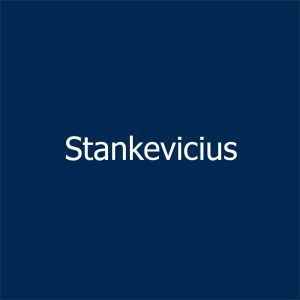Hong Kong-based gaming and blockchain powerhouse Animoca Brands is preparing for a major milestone in its corporate journey — a Nasdaq listing through a reverse merger. The move marks a pivotal step in the company’s quest to expand its global footprint and secure broader access to U.S. capital markets, positioning itself as one of the first major Web3 firms to go public via this unconventional route.
Founded in 2014, Animoca Brands has become one of the most influential names in the blockchain gaming and digital asset ecosystem, developing and investing in projects that blend decentralized finance (DeFi), non-fungible tokens (NFTs), and metaverse innovation. Its portfolio includes over 400 investments, with prominent holdings in companies such as The Sandbox, Axie Infinity, and OpenSea.
The decision to pursue a reverse merger — a process that allows a private company to become publicly traded by merging with an already listed entity — reflects both strategic timing and market pragmatism. Amid an increasingly complex regulatory landscape for crypto and blockchain ventures, Animoca’s leadership sees the Nasdaq listing as a way to gain investor credibility, enhance liquidity, and strengthen its governance structure in preparation for global expansion.
Why a Reverse Merger Instead of a Traditional IPO?
A traditional initial public offering (IPO) can be lengthy, costly, and uncertain, especially for companies in emerging sectors such as blockchain and digital assets. By opting for a reverse merger, Animoca Brands can bypass some of the challenges associated with IPO filings, such as extended regulatory review periods, while still achieving the benefits of public market exposure.
Sources close to the company indicate that Animoca is already in discussions with several U.S.-listed entities that could serve as the merger vehicle. The final selection is expected to be based on compatibility with Animoca’s business model and compliance requirements.
“We believe the Nasdaq is the natural home for a technology company of our scale and ambition,” said Yat Siu, co-founder and executive chairman of Animoca Brands, during a recent investor meeting in Hong Kong. “Our mission has always been to drive digital property rights and economic inclusion through blockchain innovation — and a U.S. listing represents the next chapter of that journey.”
Building a Web3 Powerhouse
Animoca Brands has built its reputation as a pioneer in the Web3 ecosystem, bridging gaming and decentralized ownership. Its flagship projects such as The Sandbox — a metaverse platform where users can create, own, and monetize digital experiences — have attracted major corporate partners including Adidas, Warner Music Group, Gucci, and Atari.
The company’s business model rests on the belief that the future of the internet will be user-owned and blockchain-powered, allowing gamers and creators to truly own digital assets and benefit directly from their participation. This vision has resonated with investors worldwide, propelling Animoca’s valuation to over $6 billion at its peak in 2022.
Although crypto market volatility and NFT price corrections have tested the sector, Animoca has maintained a long-term view, continuing to expand its ecosystem through strategic acquisitions and partnerships. The Nasdaq listing is expected to inject new momentum, offering fresh capital and visibility to sustain its Web3 leadership.
Strategic Timing and Global Expansion
The timing of Animoca’s planned U.S. listing is particularly significant. As blockchain adoption gains traction across gaming, finance, and entertainment, institutional investors are increasingly seeking exposure to companies with proven track records in the space.
A Nasdaq debut would position Animoca alongside publicly traded technology leaders and differentiate it from speculative crypto ventures, signaling a shift toward maturity and mainstream recognition for the Web3 sector.
Industry analysts suggest that Animoca’s listing could also reinvigorate investor sentiment toward blockchain gaming and NFTs, sectors that experienced a slowdown after the 2021 boom. The company’s global strategy includes further expansion into North America, the Middle East, and Southeast Asia — regions that have shown strong interest in digital asset adoption.
Navigating Regulatory Challenges
Despite the optimism, the path to a Nasdaq listing will not be without hurdles. U.S. regulators have intensified scrutiny of blockchain and crypto firms, emphasizing transparency, compliance, and investor protection. Animoca Brands, which previously delisted from the Australian Securities Exchange (ASX) in 2020 due to regulatory disagreements over cryptocurrency operations, will need to demonstrate robust governance and financial reporting standards to satisfy Nasdaq’s listing requirements.
Executives at the firm acknowledge the challenges but express confidence in the company’s readiness. “We have grown significantly since our ASX days,” said Siu. “We’ve built an institutional-grade organization with clear financial controls, governance, and international partnerships. The Nasdaq is the right platform for our next phase.”
What the Listing Means for the Web3 Industry
If successful, Animoca Brands’ Nasdaq debut would mark a historic moment for the blockchain sector. It could pave the way for other Web3 companies to follow suit, bridging the gap between decentralized innovation and traditional capital markets.
Moreover, the listing could unlock greater access to institutional investors, increase global visibility, and encourage more robust frameworks for digital asset ownership — reinforcing Animoca’s vision of creating a more equitable and participatory internet economy.
Conclusion
Animoca Brands’ plan to go public through a reverse merger on the Nasdaq signals not just a strategic financial move, but a defining moment for the evolution of Web3. By combining the credibility of a public listing with the dynamism of blockchain innovation, Animoca is poised to set a new benchmark for how next-generation technology companies integrate into the global economy.
As investors, regulators, and innovators watch closely, Animoca’s next steps could determine more than just its own trajectory — they could shape the future of how digital ownership, gaming, and decentralized economies coexist within the mainstream financial world.
















